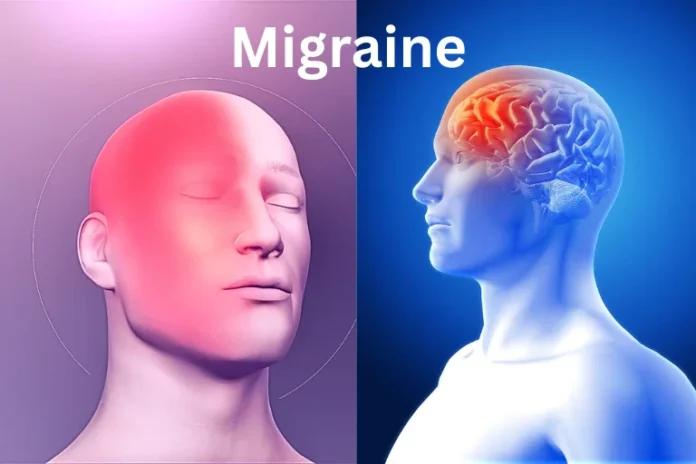Causes and Symptoms of Migraine and Home Treatment Methods
Introduction
Migraine is a common neurological condition that affects millions of people worldwide. It is characterized by intense, debilitating headaches that can be accompanied by nausea, sensitivity to light and sound, and other symptoms. While migraines can be challenging to manage, understanding their causes and symptoms can help individuals take effective steps toward relief. In this article, we explore the causes and symptoms of migraines and discuss home treatment methods that can alleviate discomfort and improve quality of life.
Causes of Migraine
Migraines are believed to be caused by a combination of genetic, environmental, and neurological factors. While the exact cause is not entirely understood, researchers have identified several triggers that can contribute to migraine attacks. These include:
Genetics – A family history of migraines increases the likelihood of experiencing them. If one or both parents suffer from migraines, their children have a higher risk of developing the condition.
Hormonal Changes – Fluctuations in hormones, especially estrogen, can trigger migraines. Women often experience migraines during menstruation, pregnancy, and menopause.
Dietary Triggers – Certain foods and beverages, such as aged cheeses, processed meats, chocolate, caffeine, and alcohol, can provoke migraines in some individuals.
Stress and Anxiety – Emotional stress and high levels of anxiety can act as significant triggers for migraine attacks.
Sleep Patterns – Lack of sleep, oversleeping, or an irregular sleep schedule can contribute to migraine occurrences.
Sensory Stimuli – Bright lights, loud noises, and strong smells can trigger migraines in sensitive individuals.
Physical Exertion – Intense physical activities or sudden movements can sometimes lead to migraine attacks.
Weather Changes – Shifts in barometric pressure, temperature fluctuations, and humidity changes can serve as triggers.
Medications – Certain medications, such as vasodilators and hormonal birth control, can increase the risk of migraines.
Dehydration and Fasting – Skipping meals or not consuming enough water can trigger migraines in some people.
Symptoms of Migraine
Migraine symptoms can vary from person to person, but they typically occur in four stages: prodrome, aura, attack, and postdrome. Understanding these stages can help individuals recognize the onset of a migraine and take necessary precautions.
- Prodrome (Pre-Migraine Stage) – This stage can occur a few hours or even days before a migraine attack. Common symptoms include:
Mood changes (e.g., irritability or depression)
Food cravings
Frequent yawning
Increased thirst and urination
Fatigue
2. Aura (Warning Stage, Occurs in Some Migraines) – Not all migraines come with an aura, but when they do, they typically involve neurological symptoms that appear before or during a migraine attack. These include:
Visual disturbances (e.g., flashing lights, blind spots, zigzag lines)
Numbness or tingling sensations in the face or limbs
Difficulty speaking or confusion
Temporary vision loss
3. Attack (Main Headache Stage) – The attack phase can last from a few hours to several days. The most common symptoms include:
Intense, throbbing headache (often on one side of the head)
Nausea and vomiting
Sensitivity to light, sound, and smells
Dizziness or lightheadedness
4. Postdrome (Recovery Stage) – After the headache subsides, individuals may experience post-migraine symptoms for a few hours to a day. These include:
Fatigue and weakness
Difficulty concentrating
Mild lingering headache
Sensitivity to stimuli
Home Treatment Methods for Migraine Relief
While medication is often used to manage migraines, there are several effective home remedies that can provide relief and prevent future attacks.
1. Rest in a Dark, Quiet Room
Migraines often cause sensitivity to light and sound, making it beneficial to rest in a dark, quiet environment. Lying down in a cool, dark room can help alleviate pain and promote relaxation.
2. Apply a Cold Compress
A cold compress or ice pack placed on the forehead, temples, or the back of the neck can reduce inflammation and numb the pain associated with migraines.
3. Stay Hydrated
Dehydration can trigger or worsen migraines. Drinking plenty of water throughout the day and avoiding excessive caffeine and alcohol intake can help prevent attacks.
4. Use Essential Oils
Certain essential oils, such as lavender and peppermint, have calming and pain-relieving properties. Inhaling their aroma or applying diluted oil to the temples may provide relief.
5. Practice Relaxation Techniques
Stress is a significant migraine trigger. Techniques such as deep breathing, meditation, and yoga can help reduce stress levels and prevent migraines.
6. Maintain a Regular Sleep Schedule
Irregular sleep patterns can lead to migraines. Going to bed and waking up at the same time every day can promote better sleep hygiene and reduce the frequency of migraine attacks.
7. Consume Magnesium-Rich Foods
Magnesium deficiency has been linked to migraines. Foods like nuts, seeds, spinach, and bananas can help boost magnesium levels and lower migraine risk.
8. Caffeine in Moderation
In small amounts, caffeine can relieve migraines by constricting blood vessels. However, excessive caffeine consumption can lead to rebound headaches, so it should be used cautiously.
9. Ginger Tea
Ginger has anti-inflammatory properties that may help reduce migraine symptoms, especially nausea. Drinking ginger tea or taking ginger supplements can be beneficial.
10. Acupressure and Massage
Applying pressure to specific points on the body, such as the base of the skull or the space between the thumb and forefinger, can help relieve migraine pain. A gentle head massage can also enhance circulation and relaxation.
11. Track and Avoid Triggers
Keeping a migraine diary can help identify triggers and prevent future attacks. Noting down foods, activities, and environmental factors leading up to an attack can aid in making necessary lifestyle adjustments.
Conclusion
Migraines can be a challenging and painful condition, but understanding their causes and symptoms can help individuals take proactive measures to manage them effectively. While medical treatments are available, home remedies can provide significant relief and help prevent future attacks. By adopting lifestyle changes such as staying hydrated, managing stress, maintaining a sleep schedule, and using relaxation techniques, individuals suffering from migraines can experience improved well-being and reduced frequency of migraine episodes.

